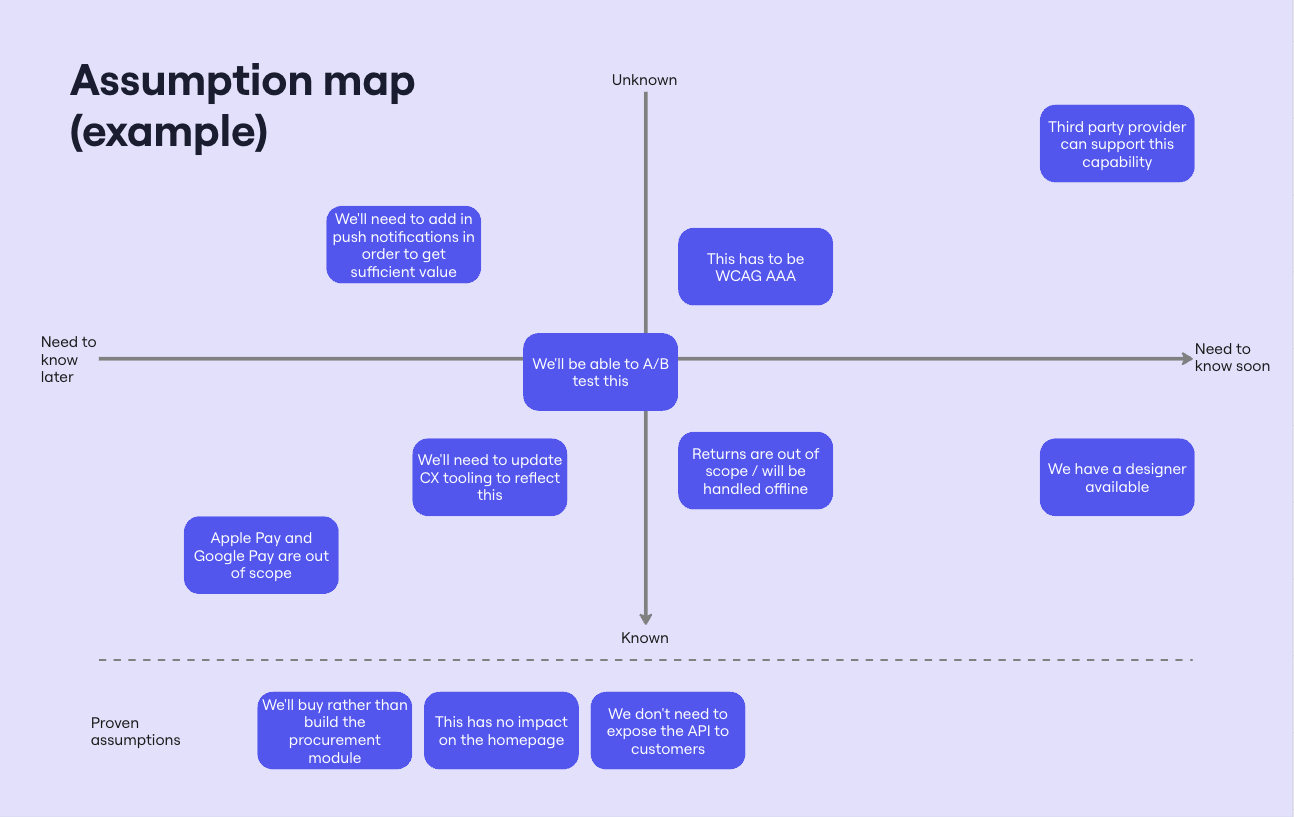Template: Assumption map
There is no better way to kick off a new initiative than an assumption map. Whether it's a gnarly area that you want to do some focused discovery into, a new beast of a feature that you're struggling to wrap your arms around, or a complicated programme of work that straddles different areas, products, and teams - assumption maps are the best tool we've got for:
- building up a shared understanding of the challenge
- calling out what we know and what we don't know
- deciding what matters and what doesn't
- prioritising what to focus on next
So we decided to create an assumption map template all of our own, distilling our learnings from dozens we've previously created.
What is it?
Assumption maps are most useful when kicking off something new, which could be a feature, a dedicated discovery, or a larger programme of work. They enable a group of people to surface all of the assumptions about an area of interest, visualise the associated urgency and uncertainty, and not only foster a shared understanding within the group, but also provide a simple and clear framework with which to prioritise the assumptions, focusing on the riskiest first and deferring those which could prove merely as distractions.

How to get the most out of it
Block out some time (30-45 mins is usually enough) as part of a dedicated kick-off session with key stakeholders, ideally after the meat of the feature / problem / programme has been talked through.
Everybody adds assumptions, and the contributors talks through each one in turn, with the group then aligning on how quickly they feel they need to prove or disprove it, and how known or unknown it is.
The assumption map drives the activities of the core team who are working on the feature / problem / programme, enabling them to focus on those items closest to the top right.
Review the assumption map weekly or fortnightly, capturing new assumptions as you go, and striving to prove or disprove them in priority order.
Give our assumption map template a go, or try one of our others below:
- Story map template - the best tool to illustrate product capabilities, foster a shared understanding, slice and prioritise, and surface dependencies.
- Product team canvas - a one-pager where anyone should be able to go to and within minutes have a good grasp of the shape of a product team's domain, be it personnel, tech, ways of working, or wider business context.
- Service blueprint - to help you visualise existing products, create shared understanding, identify improvements, and describe a future vision.
- Decision stack - a distilled view of your vision and strategy, setting the direction of travel for the short, mid, and long-term.

